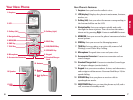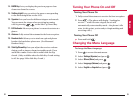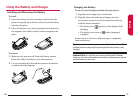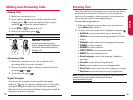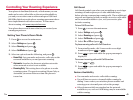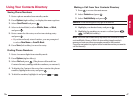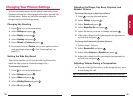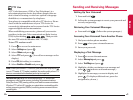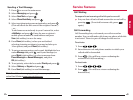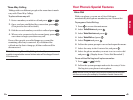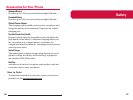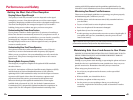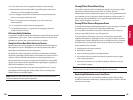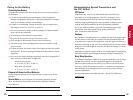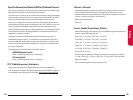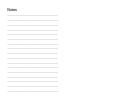
33
Acknowledging Special Precautions and
the FCC Notice
FCC Notice
This phone may cause TV or radio interference if used in close
proximity to receiving equipment. The FCC can require you to
stop using the phone if such interference cannot be eliminated.
Vehicles using liquefied petroleum gas (propane or butane) must
comply with the National Fire Protection Standard (NFPA-58).
For a copy of this standard, contact the National Fire Protections
Association, One Batterymarch Park, Quincy, MA 02269,
Attn.: Publication Sales Division.
Cautions
Any changes or modifications to your phone not expressly approved in
this document could void your warranty for this equipment and void
your authority to operate this equipment. Only use approved batteries,
antennas and chargers. The use of any unauthorized accessories may be
dangerous and void the phone warranty if said cause damage or a defect
to the phone.
Although your phone is quite sturdy, it is a complex piece of equipment
and can be broken. Avoid dropping, hitting, bending or sitting on it.
Body-Worn Operation
To maintain compliance with FCC RF exposure guidelines, if you wear a
handset on your body, use the supplied or approved carrying case,
holster or other body-worn accessory. If you do not use a body-worn
accessory, ensure the antenna is at least 1.9 cm from your body when
transmitting. Use of non-approved accessories may violate FCC RF
exposure guidelines.
For more information about RF exposure, visit the FCC Website at
www
.fcc.gov.
Safety
32
Caring for the Battery
Protecting Your Battery
The guidelines listed below help you get the most out of your battery’s
performance.
ⅷ
Use only authorized batteries and chargers. These chargers are
designed to maximize battery life. Using other batteries or chargers
voids your warranty and may cause damage.
ⅷ
In order to avoid damage, charge the battery only in temperatures
that range from 32º F to 113º F (0º C to 45º C).
ⅷ
Don’t use the battery charger in direct sunlight or in high humidity
areas, such as the bathroom.
ⅷ
Never dispose of the battery by incineration.
ⅷ
Keep the metal contacts on top of the battery clean.
ⅷ
Don’t attempt to disassemble or short-circuit the battery.
ⅷ
The battery may need recharging if it has not been used for a long
period of time.
ⅷ
It’s best to replace the battery when it no longer provides acceptable
performance. It can be recharged hundreds of times before it needs
replacing.
ⅷ
Don’t store the battery in high temperature areas for long periods of
time. It’s best to follow these storage rules:
Less than one month:
-4º F to 140º F (-20º C to 60º C)
More than one month:
-4º F to 113º F (-20º C to 45º C)
Disposal of Lithium Ion (LiIon) Batteries
For safe disposal options of your LiIon batteries, contact your service
provider.
Special Note: Be sure to dispose of your battery properly. In some
areas, the disposal of batteries in household or business trash may
be prohibited.
Note:For safety, do not handle a damaged or leaking LiIon battery.



